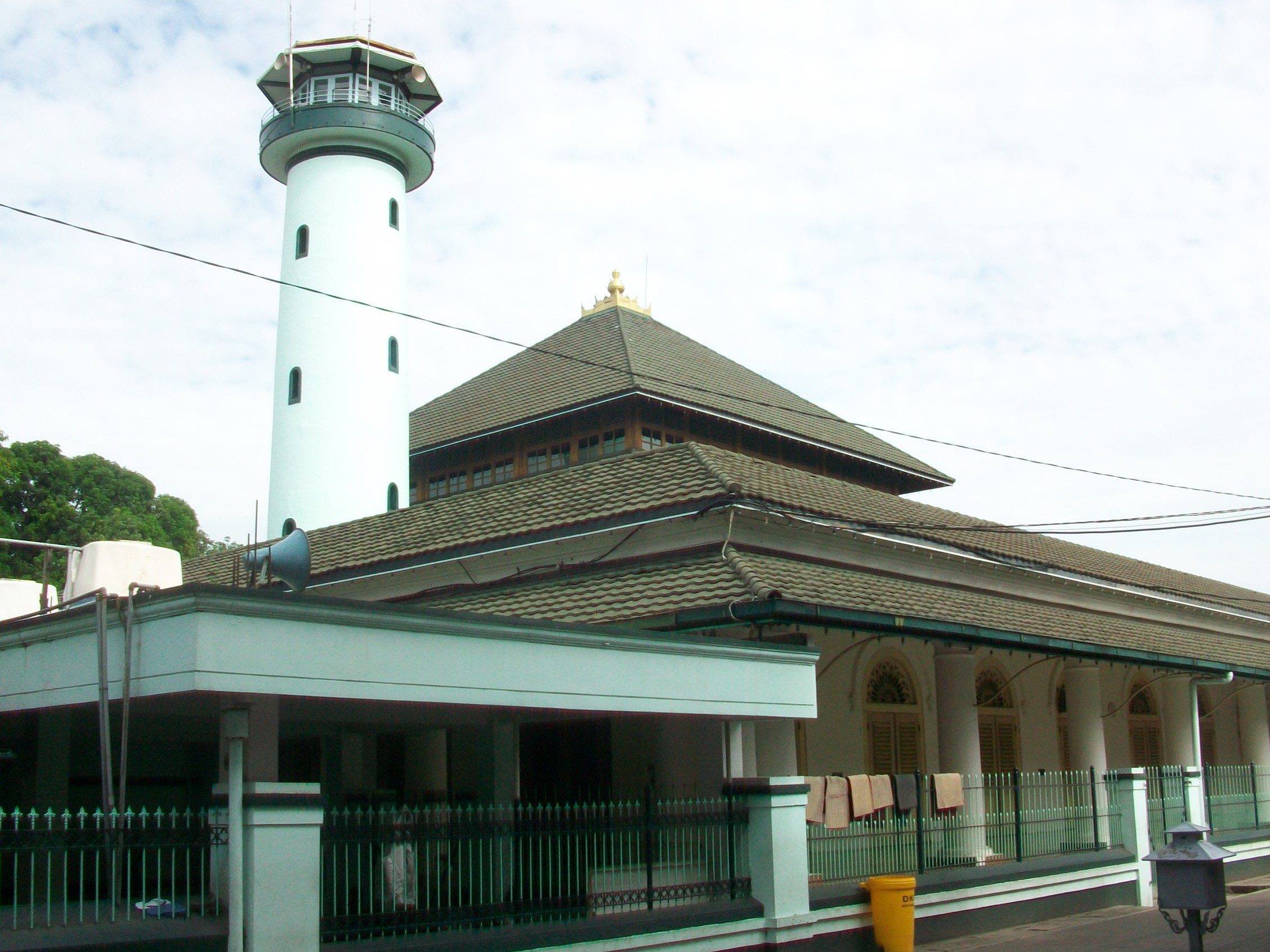|
Police Actions (Indonesia)
The police actions (, also ), were two major military offensives that the Netherlands carried out on Java and Sumatra against the Republic of Indonesia during its struggle for independence in the Indonesian National Revolution. In Indonesia they are collectively known as the Dutch Military Aggressions (), although the less common translation is also used. In Dutch historiography and discourse, the entire Indonesian War of Independence was for a long time euphemistically referred to as 'the police actions', as coined by the government of the time. In the Netherlands, the impression prevailed that there had only been two separate, short-lived police actions, intended to restore Dutch authority over a rebellious overseas territory. This perspective ignores the fact that between the arrival of Dutch troops in March 1946 and the cession of sovereignty in December 1949, there had been a full-scale military occupation and an ongoing counterinsurgency involving 120,000 conscripts. O ... [...More Info...] [...Related Items...] OR: [Wikipedia] [Google] [Baidu] |
Operation Product
Operation Product was a Dutch military offensive against areas of Java and Sumatra controlled by the de facto Republic of Indonesia during the Indonesian National Revolution.Vickers (2005), p. 99 It took place between 21 July and 4 August 1947. Referred to by the Dutch as the first (police action), the military offensive is more commonly known in Indonesian history books and military records as ''Agresi Militer Belanda I'' (First Dutch Military Aggression). The offensive was launched in violation of the Linggadjati Agreement between the de facto Republic and the Netherlands. The offensive resulted in the Dutch reducing Republican-held areas to smaller areas of Java and Sumatra, split by Dutch-held areas. Background The approximately 120,000 inactive Dutch soldiers, which included significant number of Dutch-born conscripts, in Java were a significant financial burden on the Netherlands after the ravages of World War II.Ricklefs (1991), p. 225 By May 1947, the Dutch had decid ... [...More Info...] [...Related Items...] OR: [Wikipedia] [Google] [Baidu] |
Sjafruddin Emergency Cabinet
Sjafruddin Prawiranegara's Emergency Cabinet () was the government of the Emergency Government of the Republic of Indonesia (PDRI), effectively Indonesia's government in exile, established in Bukittinggi, West Sumatra following the second Dutch military aggression when the republican capital of Yogyakarta was seized and most of the cabinet allowed itself to be captured in the hope of attracting sympathy from the outside world.Ricklefs (1982) p218 Initial Composition On 19 December 1948 a meeting was held in Bukittinggi. Among those present were Sjarifuddin, Mr. Teuku Muhammad Hasan (central government commissioner for Sumatra), Col. Hidayat (commander of the Sumatra Command) and other civilian and military officials.Simanjuntak (2003) p74 *Chairman, concurrently Minister of Defense, Information and Foreign Affairs ''ad interim'': Sjafruddin Prawiranegara *Deputy Chairman, concurrently Home Affairs, Education & Culture and Religious Affairs ''ad interim'': Teuku Muhammad Hasan *M ... [...More Info...] [...Related Items...] OR: [Wikipedia] [Google] [Baidu] |
Emergency Government Of The Republic Of Indonesia
The Emergency Government of the Republic of Indonesia (, PDRI) was established by Indonesian Republicans after the Netherlands occupied the at the time capital city of Yogyakarta in Central Java, the location of the temporary Republican capital during the Indonesian National Revolution. It was established in the city of Bukittinggi and led by Sjafruddin Prawiranegara. The Republic of Indonesia's Strategy Council had prepared an emergency plan to create a "government-in-exile" in Sumatra or overseas. Sjafruddin, the Minister of Welfare, went to Bukittinggi in preparation for this emergency plan. Before being captured by the Dutch, President Sukarno sent a telegraph message to Sjafruddin in Bukittinggi giving him a mandate to create a "Republic of Indonesia government in exile" but this was not received until 1949. A similar telegraph was sent to A.A. Maramis, Indonesian Minister of Finance in New Delhi, India. Based on the emergency plan, after the Dutch invasion, on 22 Decemb ... [...More Info...] [...Related Items...] OR: [Wikipedia] [Google] [Baidu] |
Network Of War Collections
The Network of War Collections (, NOB) is a partnership of over 250 archival institutions, museums, remembrance centers and libraries in the Kingdom of the Netherlands, the former Dutch colonial empire, and internationally to bring together scattered collections of resources pertaining to World War II. The network is financed by the Ministry of Health, Welfare and Sport and receives a contribution from the National Fund for Peace, Freedom and Veteran Care. The 12 million sources of information accumulated by the NOB include artifacts, original photographs, diaries, newspaper articles, films, letters, brochures, and posters, which are sorted into themes of resistance, captivity, collaboration, life under German and Japanese occupations, liberation, warfare, international events, The Holocaust and persecution, the lead-up to and aftermath of WWII, and the Indonesian War of Independence. Oorlogsbronnen.nl Facilitated by the NIOD Institute for War, Holocaust and Genocide Stu ... [...More Info...] [...Related Items...] OR: [Wikipedia] [Google] [Baidu] |
Crow
A crow is a bird of the genus ''Corvus'', or more broadly, a synonym for all of ''Corvus''. The word "crow" is used as part of the common name of many species. The related term "raven" is not linked scientifically to any certain trait but is rather a general grouping for larger-sized species of ''Corvus''. The collective name for a group of crows is a "murder". Species * ''Corvus albus'' – Pied crow (Central African coasts to southern Africa) * ''Corvus bennetti'' – Little crow (bird), Little crow (Australia) * ''Corvus brachyrhynchos'' – American crow (United States, southern Canada, northern Mexico) * ''Corvus capensis'' – Cape crow or Cape rook (Eastern and southern Africa) * ''Corvus cornix'' – Hooded crow (Northern and Eastern Europe and Northern Africa and Middle East) * ''Corvus corone'' – Carrion crow (Europe and eastern Asia) *''Corvus culminatus'' – Indian jungle crow (South Asia) * ''Corvus edithae'' – Somali crow or dwarf raven (Eastern Africa) * '' ... [...More Info...] [...Related Items...] OR: [Wikipedia] [Google] [Baidu] |
Operation Kraai
Operation Kraai (Operation Crow) was a Dutch military offensive against the '' de facto'' Republic of Indonesia in December 1948, following the failure of negotiations. With the advantage of surprise, the Dutch managed to capture the Indonesian Republic's temporary capital, Yogyakarta, and seized Indonesian leaders such as ''de facto'' Republican President Sukarno. This apparent military success was, however, followed by guerrilla warfare, while the violation of the Renville Agreement ceasefire diplomatically isolated the Dutch. This led to the Dutch–Indonesian Round Table Conference and recognition of the United States of Indonesia. Referred to by the Dutch as the second , it is more commonly known in Indonesian history books and military records as ''Agresi Militer Belanda II'' (Second Dutch Military Aggression).Zweers (1995) Background The second or military operation was aimed at conquering Jogjakarta, the then Indonesian capital, and the other areas held by the Re ... [...More Info...] [...Related Items...] OR: [Wikipedia] [Google] [Baidu] |
Porong
Porong is a district in Sidoarjo Regency, East Java, Indonesia. It has a population of 70,170 as of 2023.Badan Pusat Statistik, Jakarta, 28 February 2024, ''Kabupaten Sidoarjo Dalam Angka 2024'' (Katalog-BPS 1102001.3515) Located about south of the regency seat. It is bordered by Krembung District to the west, Pasuruan Regency Pasuruan Regency () is a Regencies of Indonesia, regency in East Java, a province of Indonesia. The capital of this regency is Bangil. The regency covers an area of 1,474.02 km2, and it had a population of 1,512,468 at the 2010 CensusBiro Pusat ... to the south, Jabon District to the east, and Tanggulangin District to the north. The eponymous Porong River flows at its south. Villages Porong consists of 19 administrative villages, of which six are classed as urban ''kelurahan'' and thirteen as rural ''desa''. Urban ''kelurahan'': *Gedang *Jatirejo *Juwetkenongo *Mindi *Porong *Siring Rural ''desa'': *Candipari *Glagahharum *Kebakalan *Kebonagung * ... [...More Info...] [...Related Items...] OR: [Wikipedia] [Google] [Baidu] |
East Java
East Java (, , ) is a Provinces of Indonesia, province of Indonesia located in the easternmost third of Java island. It has a land border only with the province of Central Java to the west; the Java Sea and the Indian Ocean border its northern and southern coasts, respectively, while the narrow Bali Strait to the east separates Java from Bali by around . Located in eastern Java (island), Java, the province also includes the island of Madura Island, Madura (which is connected to Java by the longest bridge in Indonesia, the Suramadu Bridge), as well as the Kangean Islands, Kangean islands and other smaller island groups located further east (in the northern Bali Sea) and the Masalembu Islands, Masalembu archipelago to the north. Its capital is Surabaya, the Largest cities in Indonesia, second largest city in Indonesia, a major industrial center and also a major business center. Banyuwangi is the largest regency in East Java and the largest on the island of Java. The province cover ... [...More Info...] [...Related Items...] OR: [Wikipedia] [Google] [Baidu] |
Mariniersbrigade
The ''Mariniersbrigade'' () was a Marines, marine unit set up by the Dutch government-in-exile during World War II, which existed between 1943 and 1949. It was formed as part of the Dutch contribution to the Allies of World War II, Allied war effort against Empire of Japan, Japan and more particularly for the liberation of the Dutch East Indies. The driving force behind its creation was marine colonel w:nl:Mattheus de Bruyne, M. R. de Bruyne. The ''Mariniersbrigade'' became an independently operating unit with a strength of approximately 5,000 men. Capable of Amphibious warfare, amphibious landings, the unit had a core of three infantry battalions, and was further equipped with landing craft, artillery and tanks. Creation In 1943, a so-called 'core cadre group' was formed, which consisted of 175 members of the Netherlands Marine Corps mainly from Curaçao, and other career soldiers who had remained out of enemy hands. More than a hundred members of the core cadre group gained comba ... [...More Info...] [...Related Items...] OR: [Wikipedia] [Google] [Baidu] |

